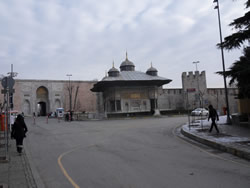
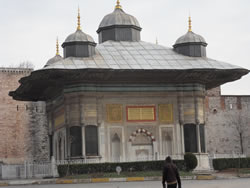
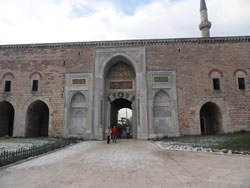
|
Any comments or questions please contact us: kevin@sailawayonline.co.uk or ann@sailawayonline.co.uk (Please note our reply depends on available internet access, we will reply to you as soon as possible.) |
Turkey II - Istanbul, Topkapi Palace.
To view our previous log entries please use the following link:
Turkey I - Istanbul, The Blue Mosque, Grand Bazaar and the Hagia Sophia Museum.
To view our next log entries please use the following link:
Useful links on this page (Cut & paste if necessary):
Hotel Side, Sultanahmet, Istanbul:
Restaurant: Aloran Cafe & Restaurant, Sultanahmet, Istanbul: www.aloranistanbul.com
Log Entry Wednesday 18th January - We visit the Topkapi Palace (Sultanahmet)
 |
 |
 |
The Topkapi Palace is located in Gülhane Park to the rear of Hagia Sophia, just beyond the sultans tombs, it's impressive gates were closed to the public yesterday, as it is every week. We looked over yesterday, with the armed guards patrolling the gates it was an obvious clue to it's closure? The Palace was originally constructed by Fatih Sultan Mehmet the Conqueror in 1478 and was used as the administrative centre of the Ottoman Empire and the residence of the Sultans for over 380 years. Although updated over time, it boasts 300 rooms, 9 Turkish baths, 2 Mosques and a hospital in the Harem.
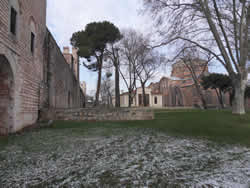 |
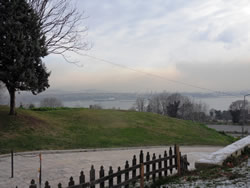 |
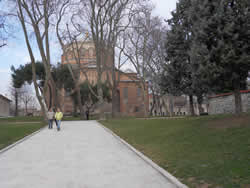 |
As soon as you enter the great park the grandeur is instantly evident with the associated peripheral builds, not all open to the public, nor their reason for existence declared. The great wall and gateways surrounding the park perimeter speak for themselves.
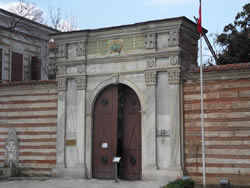 |
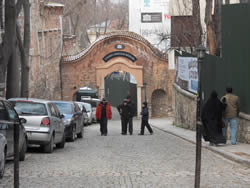 |
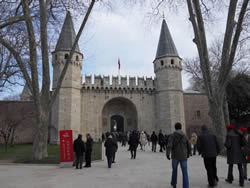 |
As you make your way towards the entrance to the Palace ground through the Imperial Gate and see the hoards of tourists making a visit it is hard to believe in the time of sultans, traditionally, no commoners were allowed beyond this point?
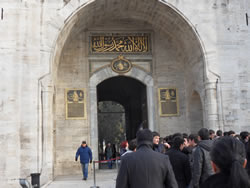 |
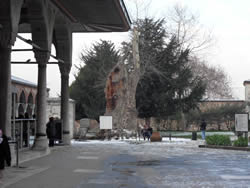 |
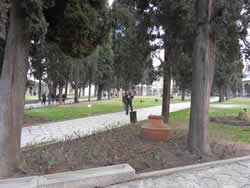 |
Passing through the gate the second courtyard was once the home to thousands of staff, including the sultans advisors and his private army of Janissary guards. To the right of this great courtyard are the Palace Kitchens, unfortunately closed today. The kitchens, staffed by up to 1000 cooks, on call to serve the sultan and family were able to feed up to 4000 people daily, twice as many typically if there was a banquet - hard to imagine?
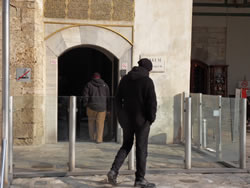 |
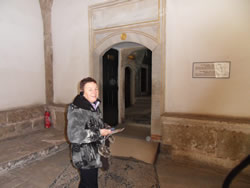 |
We decide to pay the additional fee and visit the Harem primarily to see how it compared against my own? In addition to the four wives allowed by Islamic law the Ottoman sultans allowed themselves a large variety of concubines, the most beautiful girls from around the empire, many bought from the slave market. The Harem was traditional run by the sultan's mother and the sultans first wife - who else better qualified to determine the sultans needs, likes and dislikes?
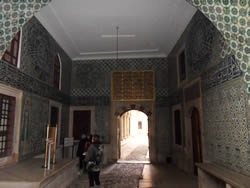 |
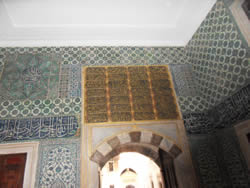 |
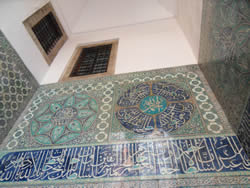 |
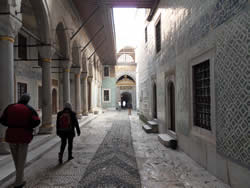 |
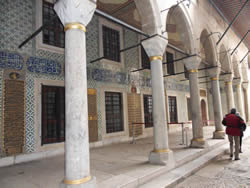 |
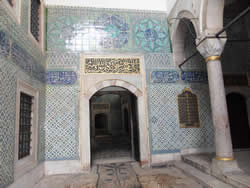 |
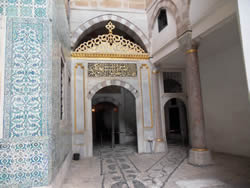 |
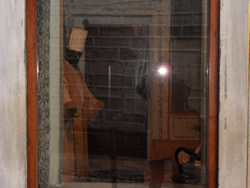 |
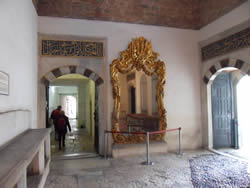 |
We first enter the "Courtyard of the (black) Eunuchs", these castrated figures administrated the harem - what an existence in a devious world of up to several hundred women all trying to gain status or power? We pass by the internal harem entrance with two great mirrors used to watch for "unwanted visitors".
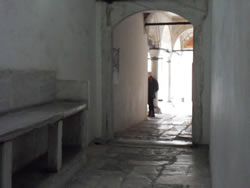 |
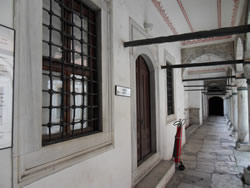 |
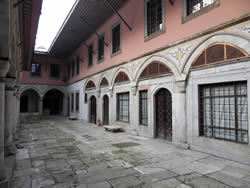 |
We pass down the "Passage of the Concubines" where the eunuchs would lay their dirty dishes to be returned to the kitchen, out into the area known as the "Court of the concubines and the sultans chief consorts". Off the courtyard were bathrooms, laundry facilities and the apartments of the chief consorts.
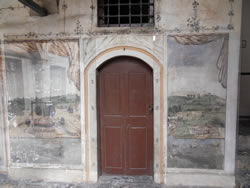 |
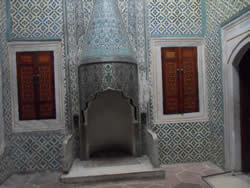 |
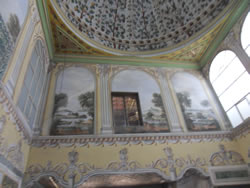 |
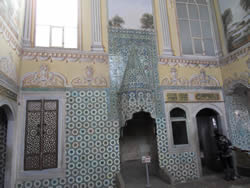 |
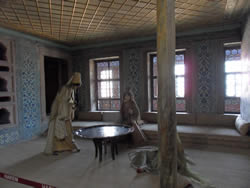 |
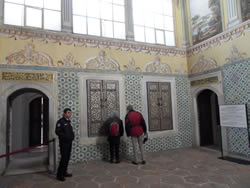 |
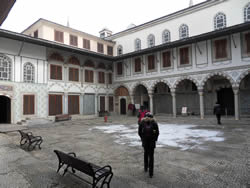 |
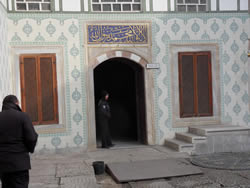 |
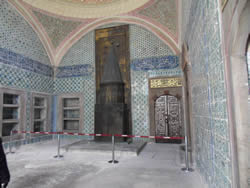 |
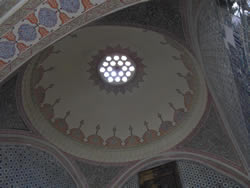 |
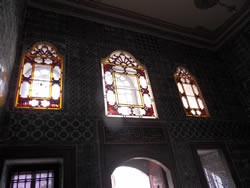 |
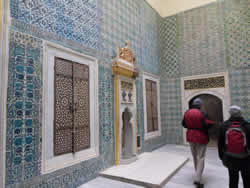 |
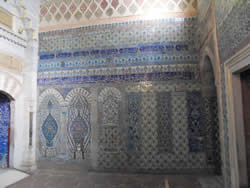 |
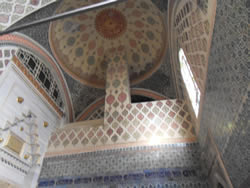 |
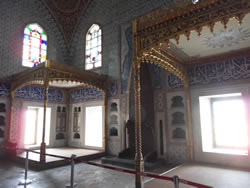 |
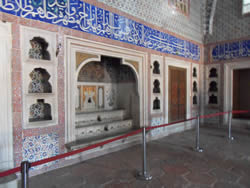 |
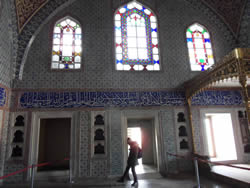 |
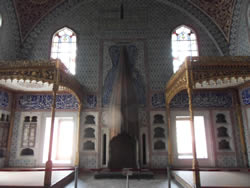 |
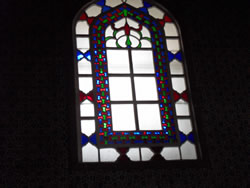 |
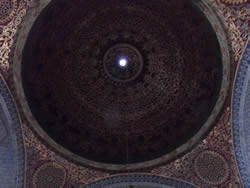 |
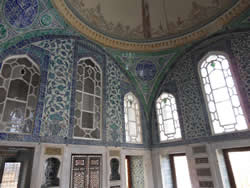 |
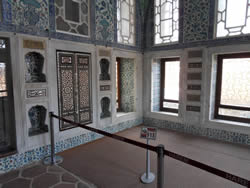 |
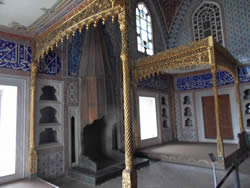 |
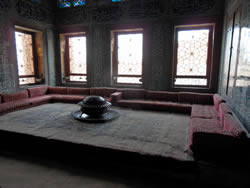 |
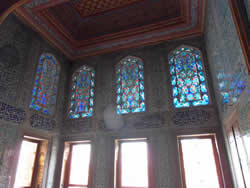 |
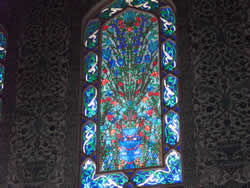 |
We then passed into the private chambers, the luxurious living quarters of the sultan and the quarters of the sultans' mother (Valide Sultan) this woman held great power in the Ottoman Dynasty. The grandeur is clearly shown in the pictures above, it is impossible to comprehend the wealth of the sultans?
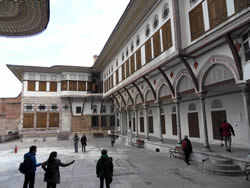 |
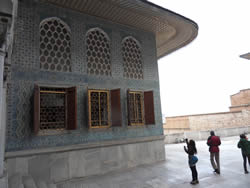 |
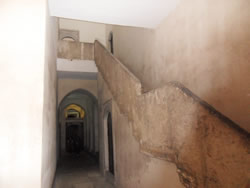 |
One enters the final, private courtyard before walking down "The Golden Road", believed to be the place where the sultan would throw gold coins down to the concubines at festive times.
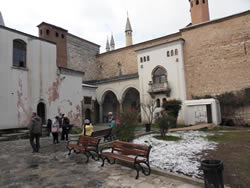 |
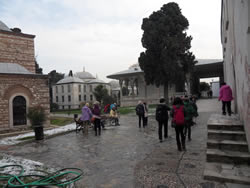 |
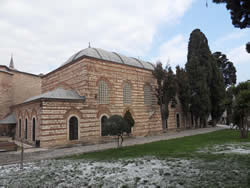 |
We exit the harem, into a further courtyard into the heart of the palace, in front of the "Private Audience Hall/Chamber of Petitions".
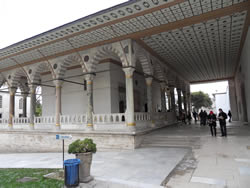 |
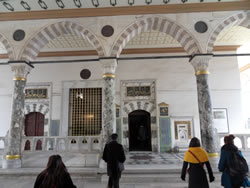 |
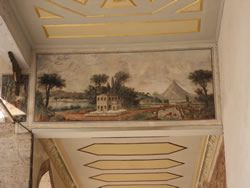 |
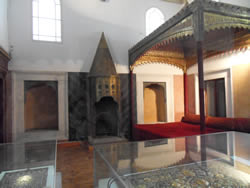 |
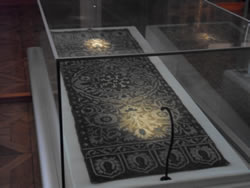 |
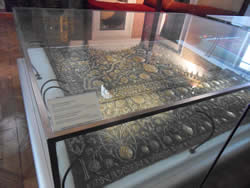 |
This was a grand building, it's name clearly declaring it's function.
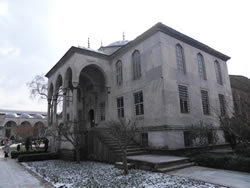 |
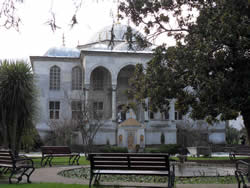 |
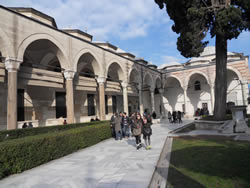 |
Central to this courtyard is the Library, unfortunately closed, we make for the chambers displaying sacred relics, imperial costume collections and other treasures. A superb collection of priceless relics and jewels, no photography allow through out the halls - closely policed.
The true wealth becomes evident, jewellery, swords and daggers with emeralds the size of eggs laid in their handles!
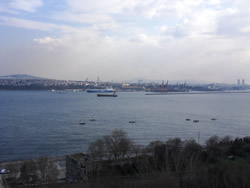 |
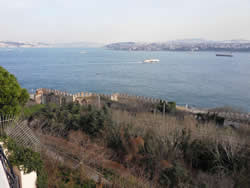 |
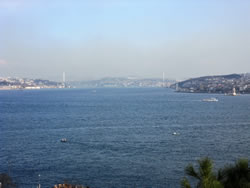 |
The view of the Bosphorus and Golden Horn spectacular from the cafeteria area.
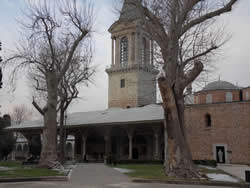 |
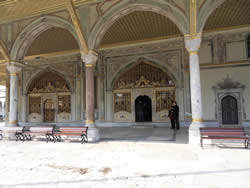 |
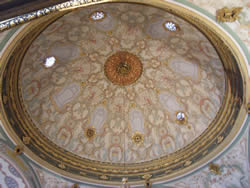 |
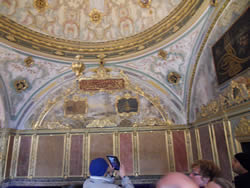 |
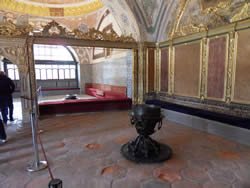 |
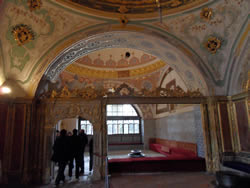 |
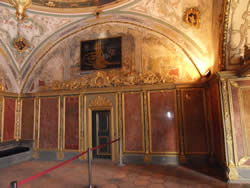 |
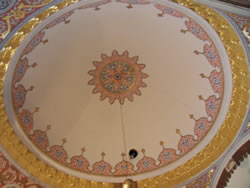 |
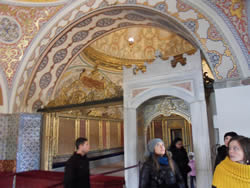 |
The last build we visit as we exit is the "Imperial Council Hall" here the advisors would discuss relevant issues, pass new laws and declarations, with or without the sultans involvement as he saw fit?
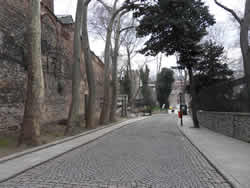 |
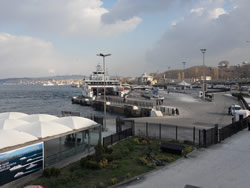 |
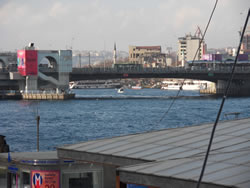 |
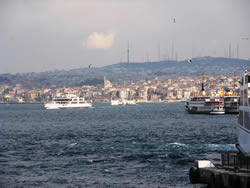 |
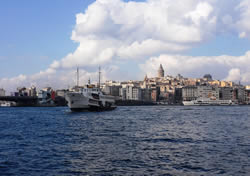 |
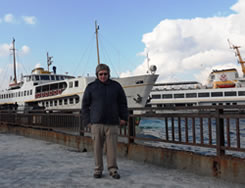 |
We leave the Palace via the exit serving the "Archaeology Museum", we make our way down to the water front, a busy cold place, nothing of any interest unless you need one of the many ferries servicing the surrounding area? We are chilled through once again and ready to return to the hotel for a good warm through before we eat this evening. The hotel is not too far away but we initially opt for a warm taxi, confusion or disagreement on pricing/tariff pushes us to return by the tram system at a fraction of the cost - whatever it was?
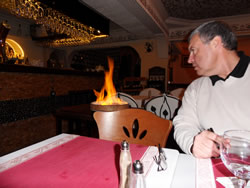 |
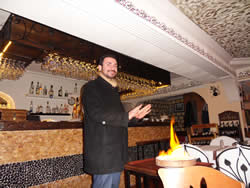 |
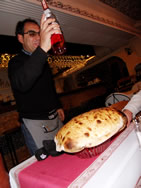 |
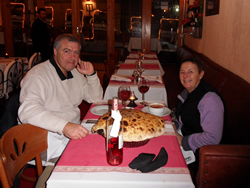 |
We end up, once again at the "Aloran", for the evening, good conversation, humour and of coarse excellant food!